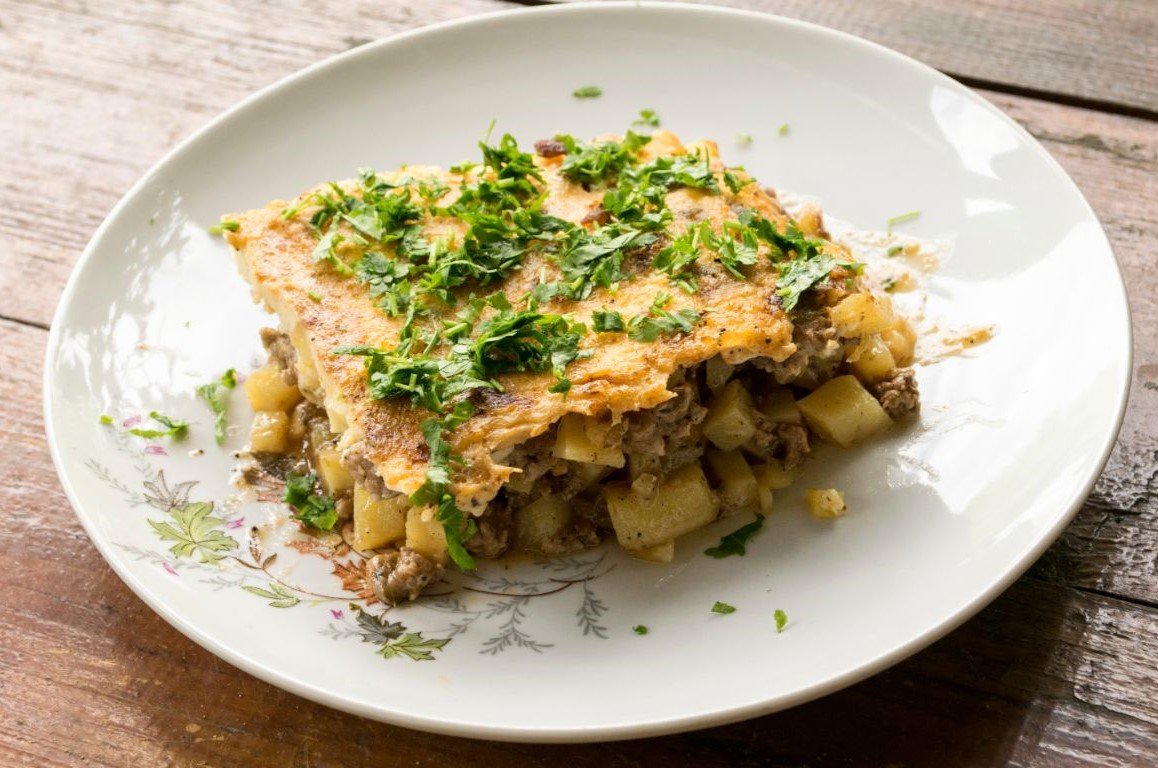Introduction to Moussaka
Moussaka is a quintessential dish in Greek cuisine, celebrated for its rich flavors and comforting textures. This layered casserole is most commonly made with eggplant, potatoes, and a delectable meat sauce, often topped with a creamy béchamel. The origins of moussaka can be traced back to the Middle East, with variations appearing throughout the Mediterranean. Each region has its own interpretation, but the Greek moussaka recipe has gained particular acclaim for its harmonious blend of local ingredients and culinary techniques.
The significance of moussaka goes beyond mere sustenance; it is a dish that encapsulates Greek culture and tradition. Commonly served during family gatherings and festivities, moussaka represents hospitality and the joy of sharing a meal with loved ones. Over time, this traditional dish has adapted to suit various dietary preferences, leading to the popular emergence of the vegetarian moussaka recipe. This alternative preserves the essence of moussaka while catering to those seeking meatless options, incorporating ingredients such as lentils, mushrooms, and an array of vegetables to maintain the dish’s beloved heartiness.
The evolution of moussaka reflects the rich culinary history of Greece, showcasing how local customs and available ingredients influence the preparation of classic recipes. Today, many home cooks relish the opportunity to recreate this famed dish, whether it be through heirloom family recipes or contemporary adaptations. The Greek moussaka recipe continues to inspire chefs and amateurs alike, reminding us that food is not only about taste but also about the stories and traditions that come with it. As we delve deeper into the preparation and variations of this dish, it becomes clear that moussaka is more than a meal; it is an experience steeped in history, culture, and flavor.
Ingredients Needed for Moussaka

To prepare a mouth-watering moussaka recipe, it is essential to gather all the necessary ingredients beforehand. This dish primarily consists of three components: the base, the filling, and the béchamel sauce. Each ingredient plays a crucial role in achieving the signature flavors associated with this traditional Greek dish.
Starting with the base, the most common choice is eggplant, renowned for its ability to absorb flavors while adding a delightful texture. However, some variations of the vegetarian moussaka recipe may include zucchini or potatoes as alternatives. Choose vegetables that are firm and fresh, as this will impact the overall taste and consistency of the dish. A good sprinkling of salt before cooking can help draw out moisture and enhance flavor.
Moving on to the filling, ground meat is often utilized in classic recipes, though for a vegetarian moussaka recipe, you can incorporate lentils, mushrooms, or a combination of both to create a hearty and filling option. Onions, garlic, and fresh herbs like parsley and oregano are key additions that provide depth and aroma. Opt for ripe tomatoes or high-quality canned tomatoes for a rich and savory sauce, which can also be fortified with a dash of red wine for added complexity.
Lastly, the béchamel sauce serves as a creamy topping that binds the layers together. You will need butter, flour, milk, and nutmeg to create this velvety sauce. Selecting whole milk will yield a richer consistency, while incorporating grated cheese, such as Parmesan or kefalotyri, can enhance flavor. It is important to whisk continuously during preparation to prevent lumps.
By ensuring you have the best quality ingredients for your Greek moussaka recipe, you will set the stage for a delicious and satisfying meal.
Step-by-Step Cooking Instructions

To create a delightful moussaka recipe, it is essential to follow a step-by-step guide that ensures each layer is prepared perfectly. Start by selecting your eggplants. Slice them into ½ inch thick rounds and generously sprinkle salt on each slice. Allow the salted eggplant to rest for about 30 minutes. This process helps draw out excess moisture and bitterness. Rinse the slices thoroughly and pat them dry with paper towels before grilling or baking until they become tender and golden brown.
Next, prepare the meat sauce for your vegetarian moussaka recipe. In a large skillet, heat a tablespoon of olive oil over medium heat. Add finely chopped onions and minced garlic, allowing them to sauté until they become translucent. Introduce your choice of ground meat or a meat substitute, stirring until browned. Incorporate diced tomatoes, a splash of red wine, and season with salt, black pepper, and a touch of cinnamon for authenticity. Let this mixture simmer for approximately 30 minutes to allow the flavors to meld beautifully.
The béchamel sauce is a critical component of the Greek moussaka recipe. Begin by melting butter in a saucepan over medium heat. Gradually add flour, whisking consistently until you achieve a smooth roux. Slowly pour in milk, continuing to whisk until the mixture thickens. Stir in grated cheese, typically Parmesan or feta, until melted and creamy. It may help to add a pinch of nutmeg for extra flavor.
Now that you have prepared each component, it’s time to assemble your moussaka. In a baking dish, layer the grilled eggplant at the base, followed by your meat sauce, and then another layer of eggplant. Pour the béchamel sauce on top, smoothing it evenly. Bake the assembled dish in a preheated oven at 375°F (190°C) for 45 minutes or until the béchamel is golden and bubbly. This process not only melds the flavors beautifully but also ensures a delectable and hearty outcome.
Serving Suggestions and Variations
When it comes to serving a delicious moussaka recipe, traditional accompaniments can significantly enhance the dining experience. One of the most popular side dishes served alongside moussaka is a fresh Greek salad, which typically features ripe tomatoes, crisp cucumbers, Kalamata olives, red onions, and feta cheese. The bright and zesty flavors of the salad contrast beautifully with the rich and hearty moussaka, offering a delightful balance on the plate. Additionally, a creamy tzatziki sauce, made from yogurt, garlic, cucumber, and herbs, can elevate the dish further, providing a refreshing and tangy element that complements the flavors of moussaka.
For those looking to adapt the classic Greek moussaka recipe to meet specific dietary preferences, there are several variations worth considering. A vegetarian moussaka recipe can be easily created by replacing the traditional ground meat with layers of vegetables such as eggplant, zucchini, and bell peppers. These vegetables not only add depth of flavor but also contribute to the dish’s textural richness. For individuals who require gluten-free options, simply ensure that the béchamel sauce is prepared without flour, or substitute it with a gluten-free thickening agent to maintain a smooth consistency.
For a lighter twist, consider incorporating alternative ingredients like lentils or beans, which can provide protein while enhancing the overall nutritional profile of the dish. Experimenting with different spices, such as cinnamon or nutmeg, can also yield intriguing new flavors, drawing on the depth of Mediterranean cuisine. Regardless of the variations chosen, the essence of moussaka remains a canvas for creativity. By exploring these suggestions, both traditional and innovative, readers can personalize their moussaka and experience the diverse flavors of Greece right in their own kitchen. In conclusion, the moussaka recipe invites culinary exploration that caters to a range of tastes and dietary needs.


